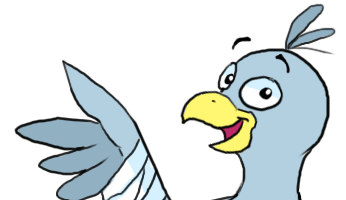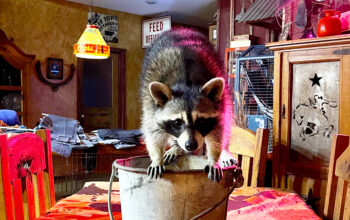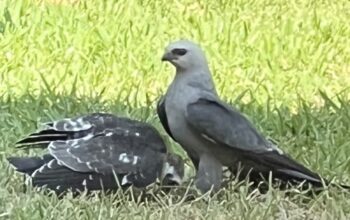This past weekend I was able to attend a wonderful three day “Parrot Festival” presented in Houston by The National Parrot Rescue and Preservation Foundation, Celebrating the Love of Flight. It cover so much that I wanted to write it all down while it is fresh in my mind.
This past weekend I was able to attend a wonderful three day “Parrot Festival” presented in Houston by The National Parrot Rescue and Preservation Foundation, Celebrating the Love of Flight. It cover so much that I wanted to write it all down while it is fresh in my mind.
Speaker 1 – Jeleen Brisco, VMD spoke on Government Regulations for the Animal Welfare Act and Birds. She works for the USDA that currently regulates the food animals and research animals and is trying to change law to include the exotic pet trade, which includes sanctuaries like Bird Tails. right now the law dictates MINIMUM standards and does not include birds.
Speaker 2- Rev. LoraKim Joyner DVM,has been working on Parrot conservation, primarily in Guatemala for over 25 years. Parasites, predation, malnutrition, africanized bees moving into nesting holes, poaching, and habitat loss have all been contributing factor in an interconnected health challenges of humans and birds. Native peoples have been encouraged to participate in the care and conservation of their lands and the animals they share it with. This is important to have sustainable solutions in rural countries that once supported their life by poaching of birds and other animals from their own forests. There is resistant by native peoples to conservation efforts of “outsiders”. Conservationist are frustrated by slow progress,if any, and lack of coordination of efforts between conservation groups. Dr Joyner calls for “Compassionate Communication” as the path to understanding the suffering of others and wanted to do something about it.
Speaker 3- Barbara Heidenreich spoke on A Good Start to a Good Bird. Raising and Training a Great Companion Parrot. As many of you may know I am a great advocate of Barbara’s positive reinforcement training. Barbara has provided several of her training DVD’s to Bird Tails for new adopters and volunteers to teach her methods. Barbara’s methods work and I will write more about that next month, or you can go to www.goodbirdinc.com for more information.
Speaker 4- Susan Clubb DVM, of the Rainforest Clinic for Birds and Exotics, in Florida spoke on Feather Damaging Behavior (FDB). As she says, feather damaging behavior is common, frustrating and perplexing disorder for the bird, the owner and vet. Dr Clubb does a “Paired Skin/Feather biopsy” to diagnose and differentiate inflammatory skin disease from FDB caused by psychogenic or hormonal disorders. A full thickness biopsy is taken from the plucked/damaged area and a second sample is taken generally from the head, undamaged area. The samples are then compared. The bird generally has inflammation in plucked areas from the plucking action but in untouched areas any inflammation would be an indication of systemic inflammatory problem like allergies. Dr Clubb recommends an inflammatory disease, anti inflammatory diets and adding a blend of oils designed to provide optimum ration of Omega 3, 6, and 9 fatty acids. Antihistamines can be applied topically but also emphasized the use of clean water bathing weekly and the use of a solution of Aloe Vera Penetrans sprayed on the feathers and skin at lease once a week. FDB is a long slow road but manageable. Whether or not the bird re-feathers is dependent on the cause of the behavior and the length of time the behavior went uncontrolled.
Speaker 5 -Kashmir Csaky – is a long time macaws breeder and trainer. She asked what was “NORMAL” behavior for a bird and answered “NATURAL” behavior. So as you observe your bird determine what you are seeing is a natural behavior. Reinforcement is ANY stimulus that increases the frequency of a behavior. Punishment is ANY stimulus that decreases the frequency of a behavior. A functional analysis is an excellent way to evaluate a behavior. What is the behavior, what is the antecedent to the behavior and what is the consequence of the behavior? The behavior will stay the same if there is no change made. Positive reinforcement is adding a stimulus to increase the rate of the behavior, using treats, petting or verbal positive dialog. Negative Reinforcement is removing an adverse stimulus to increase the rate of a behavior. Ignoring a behavior can cause it to go away, extinction, but will generally have an extinction burst, an escalation of behavior before it stops.The most effective method of extinction of a behavior is to provide an incompatible alternative behavior. You can sing and scream at the same time. Use a choice of two yes answers, not do you want to get in your cage but do you want an apple or a grape, as you go into the cage.
Speaker 6- Dr Walter Frey spoke on Good habitats lead to happy parrots, planting and enriched aviaries. Dr Frey’s aviaries are very large to allow for full flight and heavily planted for food to eat, plants to destroy and place to hide. His entire philosophy is bigger is better. In our area he suggests planting bamboo, elm, honeysuckle and allowing the weeds to grow up on the floor of the aviary,
Speaker 7 Nancy Speed spoke on Caiques, a newly popularized variety of little parrot.
Speaker 8 Dr David Phalen from the University of Sydney spoke on endangered Australian parrots. Some varies are less an 100 in the wild and will only be saved by parrot breeders.
Speaker 9- Dr. Scott Echols spoke on avian enrichment. The movement in aviculture is to provide a natural activity rich environment for our captive birds to improve their quality of life, increase exercise and to reduce feather damaging behavior. Enrichment is intervention for undesirable behaviors by providing species typical appropriate diversions. Foraging toys for birds to make them search for and find their food. Birds have spent too much time sitting idle and getting fat. Foraging toys or owner creative foraging can show improved behavior and health.
Speaker 10- Dr Natalie Antinoff discussed the many potential medical etiologies that lead to feather destructive behavior. One basic observation she urged us to make was the location of the feather damage. She found that pain caused by kidney disease caused birds to attack the feathers along the lower back above the tail, where birds kidneys are located. Occasionally birds pluck focal areas, which may or may not be symmetrical, indicating pain in the chest or GI tract. The testing of blood and x-rays can be definitive test for infection, trauma or cancer.
Speaker 11- Rick Jordan, long time breeder and bird advocate spoke to the future of Aviculture. He stated that the number of large exotic bird breeding facilities in the USA has decrease over the last few decades and how aviculture has protected many endangered species. He contends that the aviculturist is an aging population and that without young people coming along to breed and conserve parrots many species, especially the large varieties will cease to be available outside of zoos. He feels that the populations of large birds now in sanctuaries and rescue facilities will be the last strong hold of many varieties of parrots.
Speaker 12- Pest Control for the Aviary by Matt Schmitt of the Houston Zoo. As bird people we have food, water and shelter for our birds and an excellent environment for pests, from roaches to raccoons. Matt believes that home remedies are less effective than conventional pest control and allows for greater disease potential without proper control. Be proactive to reduce pests from causing damage and immediately reactive when there is an area of concern. He listed the insects; cockroaches, ants, rodents and wildlife that cause disease and death in birds. Methoprene is in Frontline Plus and in the lab setting with massive quantities consumed is slightly toxic to birds. Of all the chemicals he listed he prefers and uses Fipronil ( Frontline, Maxforce) come in a spray for home use for roaches and other insects in the home. He also mentioned that Carbaryl (Sevin Dust) is a broad spectrum insecticide that is safe to use in a 5% solution. 10% solution is toxic to birds. Also noted that mosquitoes carry pox, avian malaria, west Nile virus and St Louis encephalitis to BIRDS.
This is just a short recap of a great seminar and we are already implementing many enrichment tools. Thanks to Kaytee for all the food donated to Bird Tails.
Stay warm and get creative with foraging activities for your bird.
Jean Gibson




